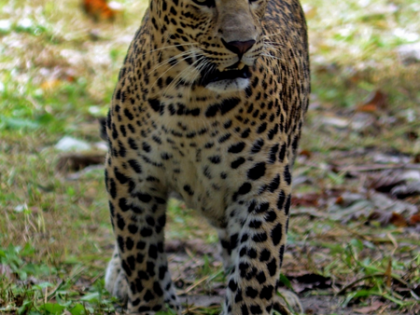54 leopards in Mumbai forests credited for highest density in world
By IANS | Updated: May 4, 2025 18:17 IST2025-05-04T18:11:16+5:302025-05-04T18:17:27+5:30
Mumbai, May 4 A survey by Wildlife Conservation Society-India and the Maharashtra Forest Department has confirmed the presence ...

54 leopards in Mumbai forests credited for highest density in world
Mumbai, May 4 A survey by Wildlife Conservation Society-India and the Maharashtra Forest Department has confirmed the presence of at least 54 leopards in Mumbai's Sanjay Gandhi National Park (SGNP) and adjoining landscapes, an official statement said on Sunday.
The release of the findings on May 3 - World Leopard Day - confirms one of the highest leopard densities recorded anywhere in the world. The survey, conducted between February and June 2024, spanned SGNP, Aarey Milk Colony, and the Tungareshwar Wildlife Sanctuary (TWLS).
Anita Patil, Conservator of Forests & Park, Director, Sanjay Gandhi National Park, Borivali, said: "The continued presence of these magnificent leopards in such a densely populated urban region speaks volumes about nature's resilience and the importance of conserving the green spaces they depend on."
"Scientific monitoring exercises like this are vital for understanding the status of our wildlife and planning informed conservation actions," said Patil.
Teams deployed camera traps at 57 locations in SGNP and 33 locations in TWLS. Forest Department staff were closely involved throughout, with specialised training sessions conducted to build their capacity in
The project was funded and supported by the Maharashtra Forest Department, among others.
In SGNP and Aarey Milk Colony, 54 individual leopards were identified, including 36 females, 16 males, and 2 undetermined individuals. Four leopard cubs were documented during the survey. In TWLS, three adult male leopards were identified.
Remarkably, three female leopards first photo-captured in 2015 were re-captured again in 2024, demonstrating over nine years of survival within SGNP, said the statement.
Camera traps also recorded a rich diversity of mammals including chital, sambar, jungle cats, and palm civets and rare finds like mouse deer and rusty spotted cats, it said.
During the exercise, a significant incident highlighted the challenges faced by Mumbai's leopards in navigating an increasingly urbanised landscape.
"A male leopard, initially photographed inside TWLS, travelled approximately 9 km across dense human settlements, major highways, and railway lines to reach Vasai Fort -- a testament to the adaptability and resilience of these big cats," said the statement.
Beyond research, the project also emphasised capacity building, training more than 50 Forest Department staff in field deployment techniques, ensuring that future monitoring efforts will continue to be community-driven and locally sustained, it said.
Disclaimer: This post has been auto-published from an agency feed without any modifications to the text and has not been reviewed by an editor
Open in app